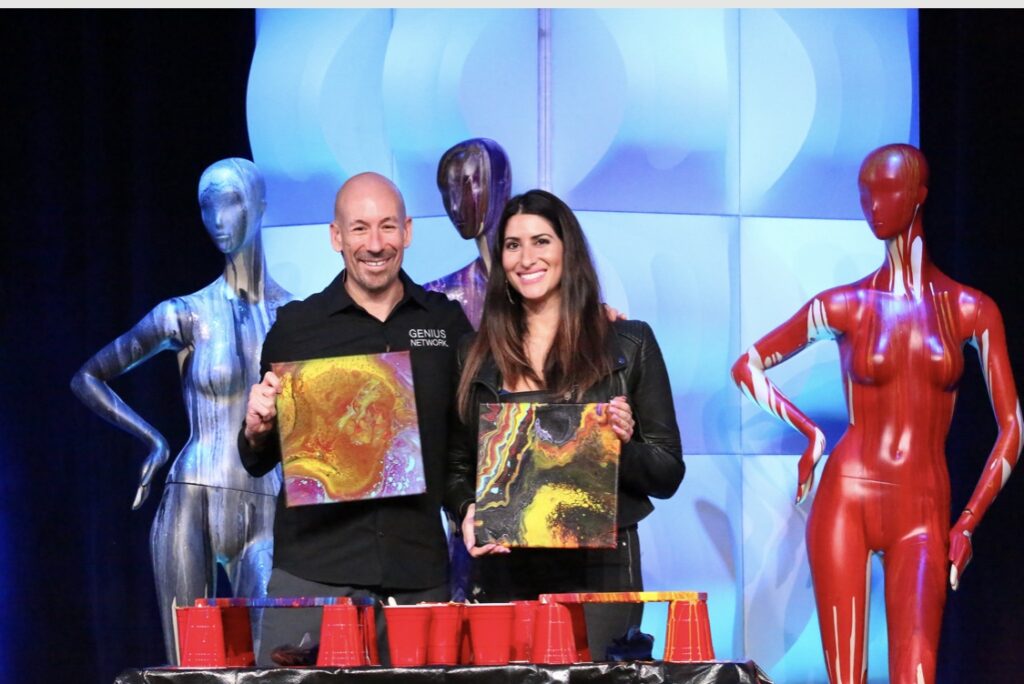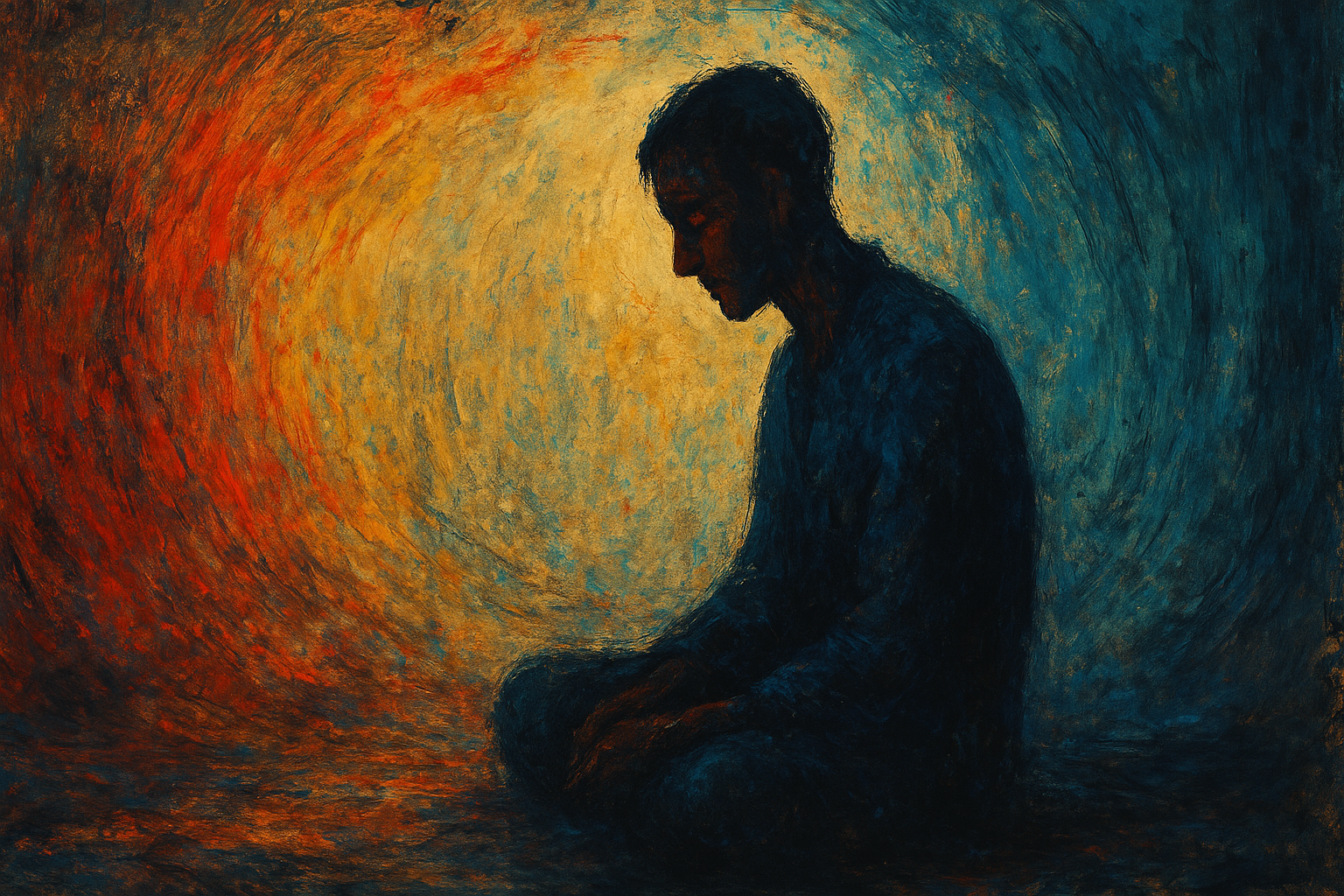Throughout her life, Leila Parnian has worn many different hats. For starters, she’s a cross-fitter, a multi-instrumentalist and a three-time all-American racquetball player. Until about six months ago, she was also the general manager at Parnian Furniture in Scottsdale, Arizona—a family business specializing in bespoke luxury accent pieces. But she left to pursue her most intense and personal interest: painting. “The passion I have for what I’m doing now blows away anything I was doing in the past,” she says. Coming from Parnian, that says a lot.
A quick scan of Parnian’s Instagram reveals recent artistic focus on two-dimensional images of various lion heads, both colorful and dynamic. The images might be flat but their effect certainly isn’t. “I’m not the most three-dimensional artist,” Parnian says. “But what I have realized is that the style I have is very unique to me. It’s not something where I need to be copying other people or learning other people’s message. This is raw art and raw talent that’s coming out of me.”
Any recent admirers of her work may be surprised upon scrolling a little farther down to an older collection called Silence Speaks. These images are much darker—abstract faces and heads rendered in black and white—often with x’s over their mouths. “I’ve been in a series of abusive relationships, mostly mentally and verbally though a little bit physically as well,” she says. “I went through a relationship where I was dealing with a narcissist, walking on eggshells and scared to say anything. A lot of my art is stemming from a place of pain to this day.”
It’s perhaps that connection that led to Parnian’s collaboration with Joe Polish, all after a chance encounter in her family’s furniture store. “Joe [Polish] came in the store about a year and a half ago,” she says, “and I had paintings in there. And he walked up to me and said, ‘Excuse me, can I get some information on this artist?’ And I said, ‘That happens to be me.’”
Using his own experience as a recovering addict, Polish’s new project serves as a resource for addicts looking for recovery groups, sobriety-themed websites and education on addiction-related issues. After their auspicious meeting, Polish got Parnian involved in his other recovery-related initiative, Artists for Addicts.
Though Parnian was never an addict, her experiences have made her a perfect fit as an advocate for the program. “I’m technically addicted to my cell phone if you want to count that,” she says, “but I dated an addict. When I found out what Joe was doing, it really fueled me wanting to help him because I had been in the shoes of someone dealing with the other side of those issues.” In her most recent relationship, Parnian says she saw the raw reality of addiction. “I was dealing with the lies, the stealing of money, the abuse,” she says. “When someone needs a fix, they’ll do whatever they need to do to get it.”
While her own artistic style is very deliberate and controlled, the approach that Parnian and Polish came up with together to teach recovering addicts was the result of another synchronicity. “Pour art is something I started about six months ago,” Parnian says. “A few months ago, Joe and I were talking and I was like, ‘We should start doing pour art for Artists for Addicts.’ Ironically, he had gone to an art store and seen an employee doing pour art too. We had the same idea without talking to each other.”
As the name suggests, pour art involves putting paint and chemicals in a plastic cup or bucket, giving it a light mix and pouring it directly onto a canvas. “The reason I was so drawn to it was that you don’t use a paintbrush,” Parnian says. “This type of art is so freeing and therapeutic because you have no control over what goes in your cup and when you flip it, you have no idea what’s going to happen.”
The final canvases produced through the pouring technique result in psychedelic images with roiling waves of color. As the art itself requires surrender to the process, it has proven cathartic for those who’ve tried it. “I’ve done pour art with at least 50 to 60 individuals so far from all walks of life,” Parnian says. As an added flourish, she’s also had her students write their personal goals (and demons) on the back of their canvases. “They’re creating these paintings with an intention. When they release the cup, it’s like they’re releasing whatever that is into the universe.”
To hear Parnian tell it, the work is a grace note at the end of a symphony of dysfunction. “I know I can’t necessarily change a person’s life overnight,” she says. “Around Thanksgiving, [my ex] called me on FaceTime because he was going through something and I almost watched him commit suicide. I was able to talk him out of it but it was pretty traumatic for me.” A few days later, he called her back, thanked her for listening and told her he’d been inspired to start painting more. Then they went over pour art together.
Having seen the stakes already, Parnian brings a grit to all her output belied by all the colorful surfaces. “These aren’t just pretty paintings,” she says. “There’s a meaning behind it.” For recovering addicts, that meaning can be any number of things. For Parnian, it’s transmuting her pain into something beautiful. “I’ve really,” she says, “poured everything out.”



